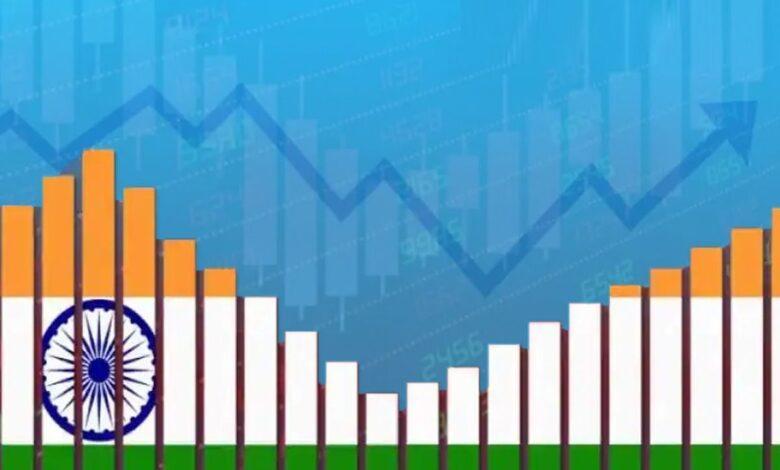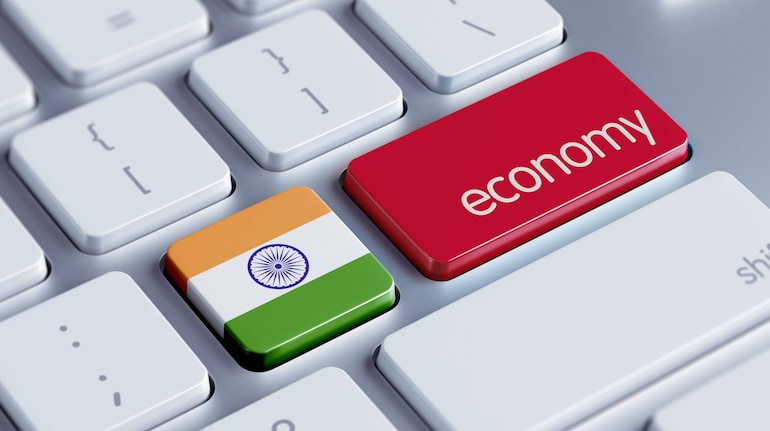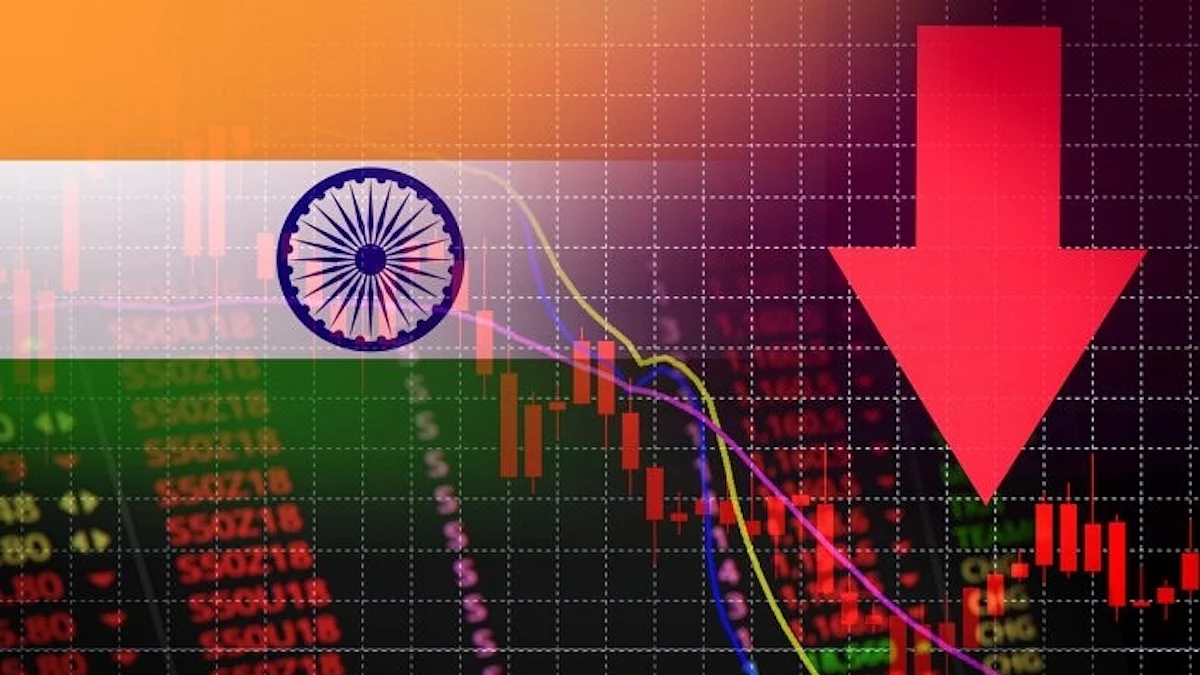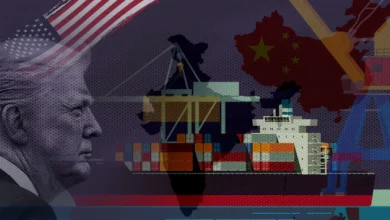The economy of India is growing as intended.

Strategic sourcing worldwide, digitalization, manufacturing investment, and an energy transformation are accelerating India’s economic growth. According to S&P Global and Morgan Stanley, the nation will have the third-largest stock market by 2030 and the third-largest economy in the world by 2027, surpassing Germany and Japan. In a study released on December 6th, the World Bank predicted that the Indian economy will expand by 6.9% this fiscal year. Earlier, it had predicted 6.5% growth. The update is so welcome.
One of the biggest economies in the world with the fastest expected growth rates in India. According to Morgan Stanley, India’s GDP is expected to increase by more than twofold by 2031, from $3.5 trillion to $7.5 trillion. Wide-ranging changes will result from economic growth. India is expected to grow into a center and industrial powerhouse. To encourage production and exports, the production-linked incentive scheme is already in existence. Offers tax breaks and speedy license clearances as incentives to investors, domestic and foreign.
In the upcoming years, India’s contribution to the global manufacturing sector will increase. Additionally, the increase will pave the way for several new firms and investments. As disposable incomes rise, customers’ purchasing power and willingness to pay will increase. This will not only raise living standards but also improve people’s quality of life.
According to Morgan Stanley, national consumption might increase by more than a factor of two from $2 trillion in 2022 to $4.9 trillion in 2030. The non-grocery retail sectors, such as fashion and accessories, leisure and recreation, and home goods and services, will see the biggest growth. Companies have started outsourcing more services to India since COVID. According to reports, Ridham Desai, Chief Equity Strategist for India at Morgan Stanley, predicted that as global outsourcing spending rises from $180 billion annually to roughly $500 billion by 2030, the number of people employed in India for jobs outside the country will at least double, reaching more than 11 million.
According to Morgan Stanley research, MNCs’ opinion of India’s investment prospects is at an all-time high. By 2031, manufacturing’s contribution to India’s GDP might rise from 15.6% to 21%, doubling the country’s export market share. According to World Bank research, the slowdown in developing countries may also make India a desirable alternative investment location.
The story of India’s progress will also be greatly impacted by the energy shift. India will use renewable energy sources, including solar, biogas, hydrogen, ethanol, wind, and hydroelectric power, to fulfill its rising energy demands. India’s dependence on imported energy will be significantly reduced through the use of non-conventional energy sources. There will be new investment possibilities as a result of the increase in energy consumption and the energy transition away from fossil fuels.
Despite the optimistic growth estimates, the skyrocketing inflation is a huge reason for concern since it affects the economy adversely. According to a World Bank study, this year’s average retail inflation will be 7.1%. In October, the inflation rate decreased to 6.77 percent from 7.41 percent in September. However, inflation has exceeded 6% for ten straight months. The combination of tighter monetary policy and rising commodity prices may dampen momentum.
Even though the World Bank believes India will not be as affected by the global slowdown as the other emerging economies, the Russia-Ukraine war, the unexpected recession in Europe and the US, and uncertainty over China’s growth will all have an impact on the Indian economy. The RBI governor, Shaktikanta Das, also disregarded the possibility of an Indian recession.
These provide us with grounds for optimism. Geopolitical unpredictability, inflation, and monetary policies will all always have an impact on the economy; these factors cannot be ignored. India would suffer greatly if a global recession continued since its economy is heavily dependent on commerce.
Global Offshoring Builds a Global Workforce
Since the early days of the Internet, businesses all over the globe have outsourced to India services like software development, customer care, and business process outsourcing. However, the notion of India serving as the world’s back office is currently gaining impetus as a result of tighter global labor markets and the advent of remote work arrangements.
“In a post-Covid context, CEOs are more comfortable with both working from home and working from India,” adds Desai. He says that as global outsourcing expenditure rises from $180 billion annually to around $500 billion by 2030, the number of individuals hired in India for work outside the nation is anticipated to at least quadruple, reaching more than 11 million.
As corporate tax cuts, investment incentives, and infrastructure expenditures encourage capital investments in manufacturing, India is also in a position to become a global factory. According to Upasana Chachra, India’s chief economist, “multinationals are now optimistic about the possibilities of investing in India, and the government is aiding their cause by investing in infrastructure as well as providing land for developing factories.”
According to Morgan Stanley research, international firms’ perceptions of India’s investment prospects are at an all-time high. By 2031, manufacturing’s contribution to India’s GDP might rise from 15.6% to 21%, doubling the country’s export market share.
Credit, digitalization, and the consumer
With the introduction of a national identity program called Aadhaar more than ten years ago, India started laying the groundwork for a more digital economy. Among other advantages, the system generates biometric IDs to prove residency and has a major role in digitizing financial transactions.
This project is currently a component of IndiaStack, a decentralized public utility that provides an affordable all-inclusive digital identification, payment, and data-management system. According to Desai, “IndiaStack is probably going to result in a significant transformation in how India spends, borrows, and receives healthcare.”
IndiaStack has several uses, including a network for cutting credit costs, increasing loan availability, and making them more cost-effective for both individuals and enterprises. According to Desai, whose team believes the ratio of credit to GDP could rise from 57% to 100% over the next ten years, “India is now one of the most under-leveraged countries in the world.” Credit availability is a crucial factor in economic growth.
Additionally, customers in India could have more money available. The income distribution in India may change over the following ten years, and as a result, the country’s overall consumption may more than double, from $2 trillion in 2022 to $4.9 trillion by the end of the ten years. Non-grocery retail, which includes, among other things, apparel and accessories, leisure and recreation, and household goods and services, will see the biggest gains.
Access to energy and transition
Energy is essential for economic growth since it affects things like productivity, communication, trade, and quality of life. Due to recent improvements in transmission and distribution, among other things, all of India’s more than 600,000 villages now have access to electricity. Over the following ten years, this could increase India’s daily energy consumption by 60%.
Even though India will need to use fossil fuels to meet its rising energy demands, it is predicted that renewable energy sources like biogas and ethanol, hydrogen, wind, solar, and hydroelectric power will provide two-thirds of India’s new energy needs. This might lessen India’s dependency on imported energy and enhance living conditions in a nation where 14 of the 20 cities with the worst levels of air pollution are currently located. It also increases the demand for electric alternatives like electric bikes, electric cars, and environmentally friendly hydrogen-powered trucks and buses.
We believe that the increase in capital investments will help to start a positive investment cycle that will lead to more employment and income, more savings, and so on. Girish Achhipalia, an analyst with India Utilities and Industrials, claims that “the surge in India’s energy consumption accompanying the energy transformation offers up a new market to enhance investment development.”
Investing in the Decade of India
The risk factors associated with investing in India include a protracted global recession, unfavorable geopolitical events, domestic policy changes, a shortage of trained labor, energy difficulties, and commodity volatility.
Many investment themes that have played out or are playing out in China, including the rise of financial services, industrials, and consumer goods, are gaining speed despite the obvious distinctions between India’s development and China’s economic boom.
“We expect that India’s economy will become increasingly significant for global investors in the future decade, as it evolves, in a similar manner that China is now,” says Ahya, adding that India’s next decade may mimic China’s path from 2007 through 2012. “We believe that India presents Asia’s most compelling chance for growth in the years to come.”
edited and proofread by nikita sharma




